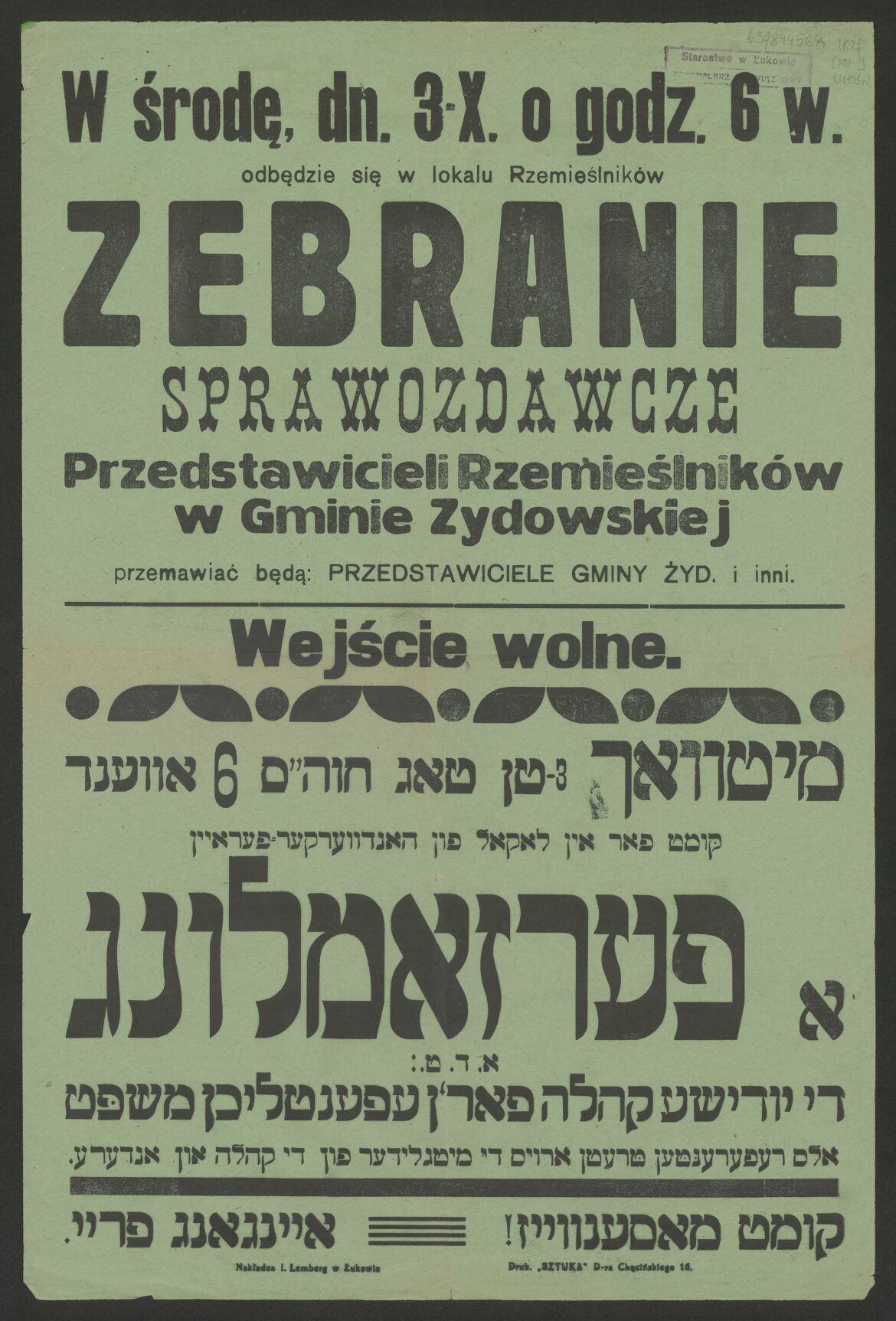In the nineteenth and early twentieth centuries, the products of Jewish craftsmen formed a significant part of the production of everyday items in central and eastern Poland.
According to available statistics, in the interwar period, in the late 1920s, in some areas of Poland more than 50% of craftsmen were of Jewish nationality. In Volhynia and Polesia, the rate was 82.5% and 81% respectively. It declined slightly in the 1930s. Also in the 19th century, the proportion of Jews in the craft professions was very high. After the Napoleonic period, the Kingdom of Poland was formed from the lands of the Duchy of Warsaw, which became part of the Russian partition. By a decision of the Governor in 1816, the outdated guild law was introduced there. The Jewish population did not have the right to associate in craftsmen’s organisations, but this did not change the fact of their large participation in craft production. Only attempts to modernise the Russian Empire after the 1905 revolution led to the granting of permission to establish a Jewish craftsmens’ club in Lodz, which was opened in 1911. It was located on then Południowa Street. It housed a reading room, a buffet, a “concert” room (with a piano) and a meeting hall. The initiative inspired Warsaw Jewish activists, who founded a similar club in Warsaw in 1913. It also attracted political activists including workers and Jewish intelligentsia representing the technical professions. Organisation rented premises on then Zimna Street.
Another initiative was the Central Jewish Craft Union in Warsaw, which functioned during the First World War. It represented the community to the municipal authorities and provided social benefits (feast and other subsidies, family evenings).
These activities prepared Jewish activists to represent the crafts community in the Second Polish Republic. Unfortunately, most participants in the crafts movement did not survive the Holocaust during the Second World War.





